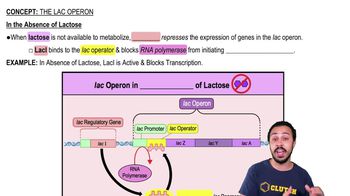An organism that has peroxidase and superoxide dismutase but lacks catalase is most likely an
a. aerobe.
b. aerotolerant anaerobe.
c. obligate anaerobe.
 Verified step by step guidance
Verified step by step guidance



An organism that has peroxidase and superoxide dismutase but lacks catalase is most likely an
a. aerobe.
b. aerotolerant anaerobe.
c. obligate anaerobe.
Define and explain the importance of each of the following:
a. catalase
b. hydrogen peroxide
c. peroxidase
d. superoxide radical
e. superoxide dismutase
Feedback inhibition differs from repression because feedback inhibition
a. is less precise.
b. is slower acting.
c. stops the action of preexisting enzymes.
d. stops the synthesis of new enzymes.
e. all of the above
NAME IT Use the key in the Clinical Focus box to identify the gram-negative, oxidase-positive rod causing pneumonia in a sea otter. It is H₂S-positive, indole-negative, and urease-positive.
Unlike purple and green phototrophic bacteria, cyanobacteria
a. produce oxygen during photosynthesis.
b. do not require light.
c. use H₂S as an electron donor.
d. have a membrane-enclosed nucleus.
e. all of the above
For questions 1–4, answer whether
a. the process takes place under aerobic conditions.
b. the process takes place under anaerobic conditions.
c. the amount of oxygen doesn’t make any difference.
Activated sludge system